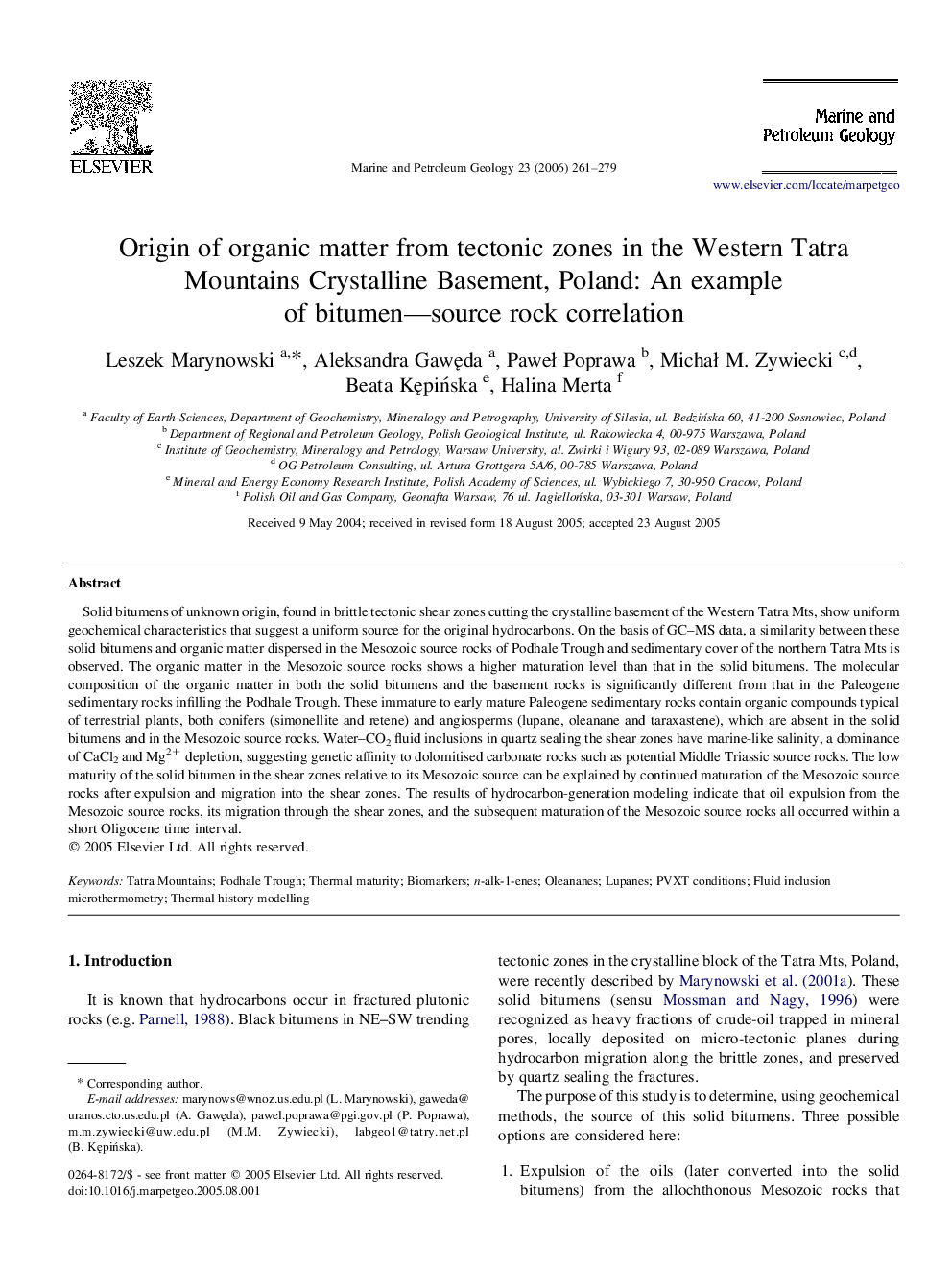| Article ID | Journal | Published Year | Pages | File Type |
|---|---|---|---|---|
| 4696763 | Marine and Petroleum Geology | 2006 | 19 Pages |
Solid bitumens of unknown origin, found in brittle tectonic shear zones cutting the crystalline basement of the Western Tatra Mts, show uniform geochemical characteristics that suggest a uniform source for the original hydrocarbons. On the basis of GC–MS data, a similarity between these solid bitumens and organic matter dispersed in the Mesozoic source rocks of Podhale Trough and sedimentary cover of the northern Tatra Mts is observed. The organic matter in the Mesozoic source rocks shows a higher maturation level than that in the solid bitumens. The molecular composition of the organic matter in both the solid bitumens and the basement rocks is significantly different from that in the Paleogene sedimentary rocks infilling the Podhale Trough. These immature to early mature Paleogene sedimentary rocks contain organic compounds typical of terrestrial plants, both conifers (simonellite and retene) and angiosperms (lupane, oleanane and taraxastene), which are absent in the solid bitumens and in the Mesozoic source rocks. Water–CO2 fluid inclusions in quartz sealing the shear zones have marine-like salinity, a dominance of CaCl2 and Mg2+ depletion, suggesting genetic affinity to dolomitised carbonate rocks such as potential Middle Triassic source rocks. The low maturity of the solid bitumen in the shear zones relative to its Mesozoic source can be explained by continued maturation of the Mesozoic source rocks after expulsion and migration into the shear zones. The results of hydrocarbon-generation modeling indicate that oil expulsion from the Mesozoic source rocks, its migration through the shear zones, and the subsequent maturation of the Mesozoic source rocks all occurred within a short Oligocene time interval.
